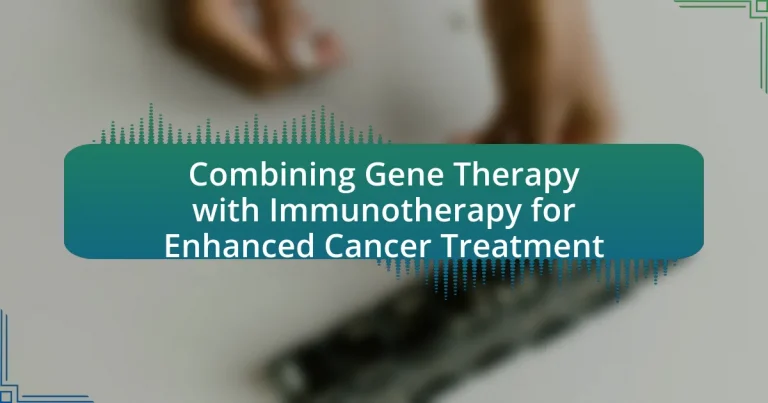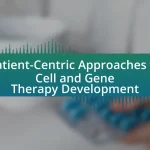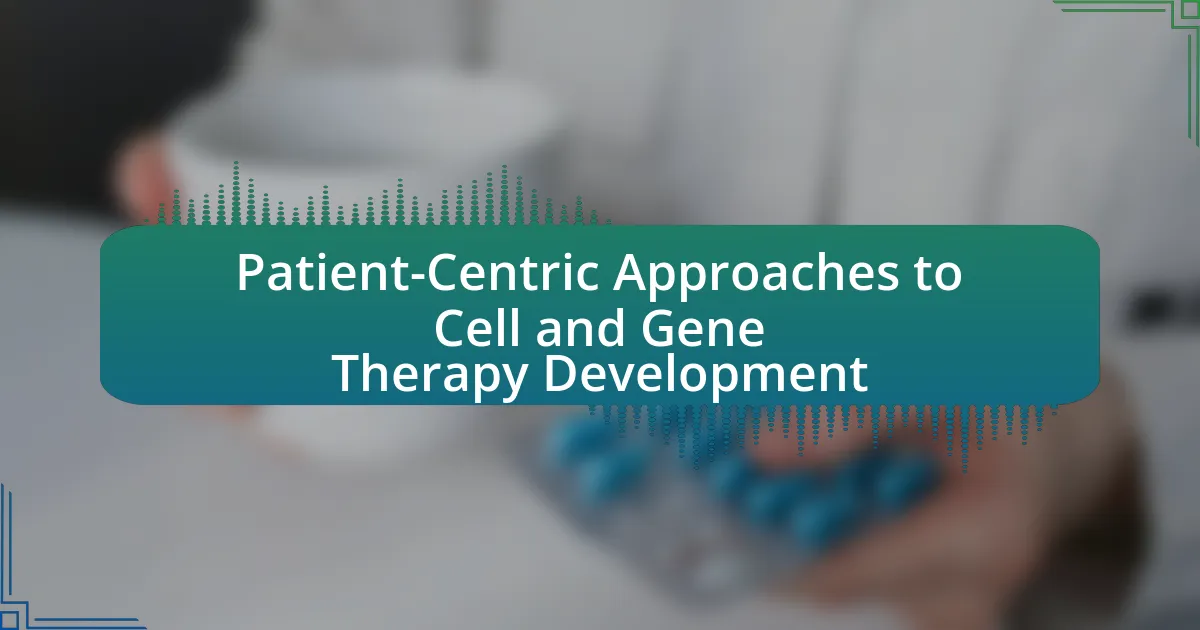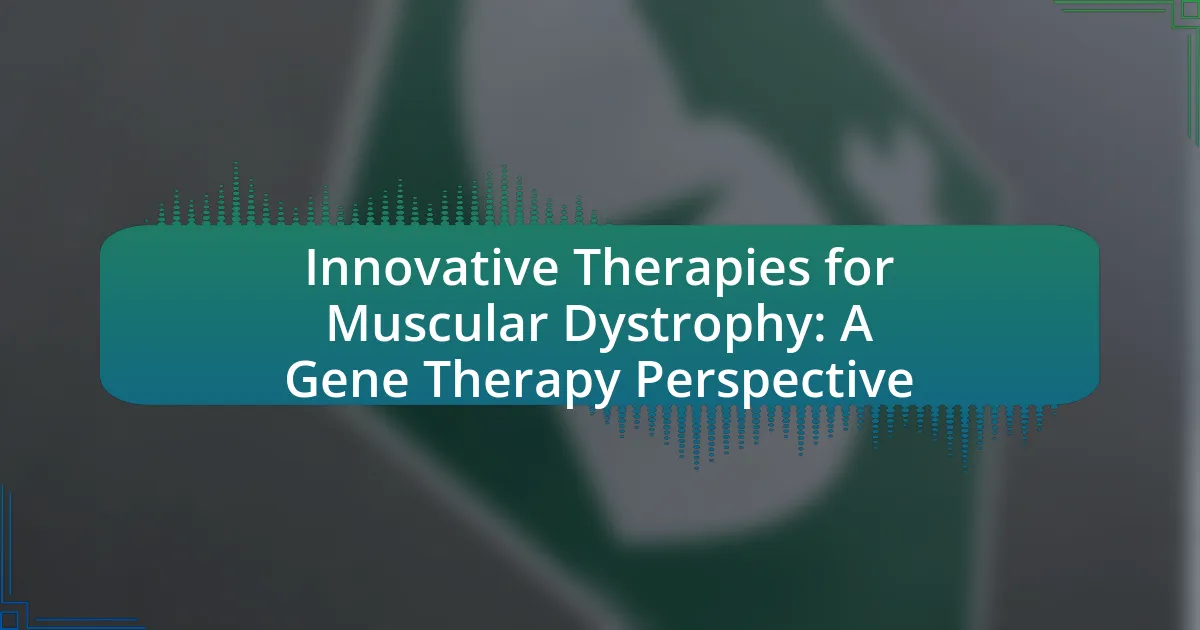Combining gene therapy with immunotherapy represents a significant advancement in cancer treatment, enhancing the immune system’s ability to target and eliminate cancer cells. This approach integrates genetic modifications to improve immune responses and make cancer cells more recognizable. The article discusses the individual contributions of gene therapy and immunotherapy, their mechanisms of action, and the synergistic effects achieved through their combination. It also highlights recent advancements, clinical trial findings, and the potential benefits for patients, while addressing challenges and best practices for managing treatment. Overall, this combined strategy aims to improve treatment outcomes and patient survival rates in various cancers.
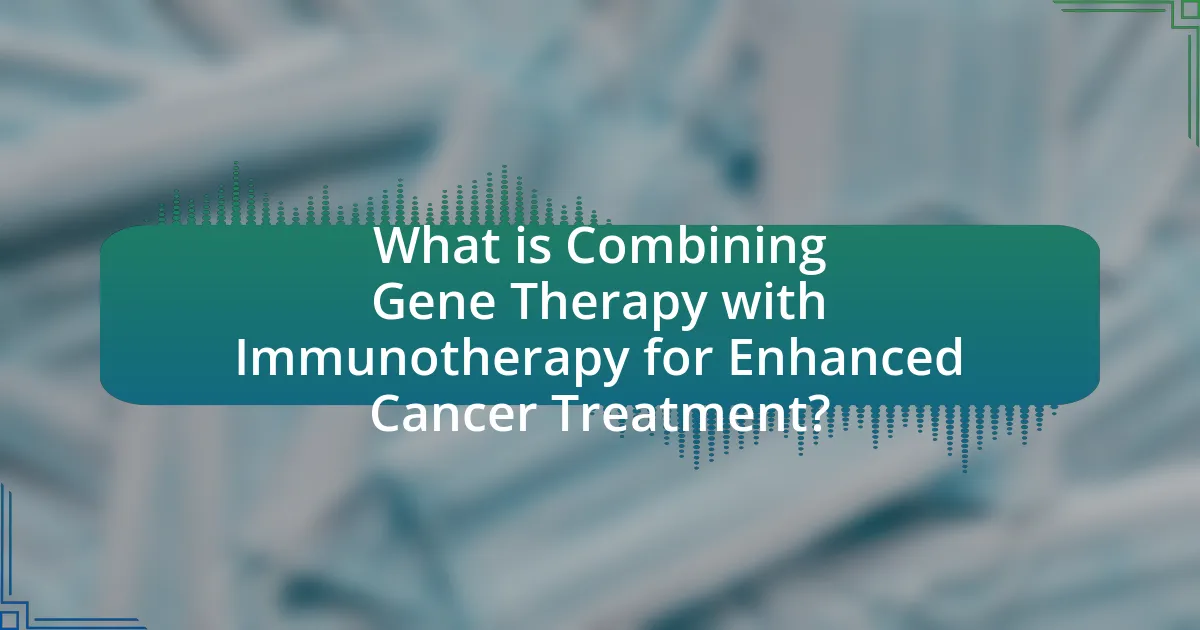
What is Combining Gene Therapy with Immunotherapy for Enhanced Cancer Treatment?
Combining gene therapy with immunotherapy for enhanced cancer treatment involves the integration of genetic modifications to improve the immune system’s ability to target and destroy cancer cells. Gene therapy introduces specific genes into a patient’s cells to enhance immune responses or to make cancer cells more recognizable to the immune system. For instance, CAR T-cell therapy, a form of gene therapy, modifies T cells to express chimeric antigen receptors that specifically target cancer antigens. Studies have shown that this combination can lead to improved treatment outcomes, as evidenced by clinical trials demonstrating increased remission rates in certain cancers, such as leukemia and lymphoma.
How do gene therapy and immunotherapy individually contribute to cancer treatment?
Gene therapy contributes to cancer treatment by directly targeting and modifying the genetic material of cancer cells to inhibit their growth or induce apoptosis. This approach can involve inserting, altering, or removing genes within cancer cells to restore normal function or enhance the immune response against tumors. For instance, a study published in the journal “Nature” demonstrated that gene therapy using oncolytic viruses can selectively kill cancer cells while sparing healthy tissue.
Immunotherapy, on the other hand, enhances the body’s immune response against cancer by utilizing agents that stimulate or restore the immune system’s ability to recognize and attack cancer cells. This includes checkpoint inhibitors, which block proteins that prevent immune cells from attacking tumors, and CAR T-cell therapy, which modifies a patient’s T-cells to better target cancer. Research published in “The New England Journal of Medicine” has shown that checkpoint inhibitors can significantly improve survival rates in patients with melanoma and lung cancer.
Together, gene therapy and immunotherapy represent distinct yet complementary strategies in cancer treatment, each contributing unique mechanisms to combat the disease effectively.
What are the mechanisms of action for gene therapy in cancer?
Gene therapy in cancer operates through several mechanisms, primarily aimed at correcting genetic defects, inducing apoptosis in cancer cells, and enhancing immune responses. One mechanism involves the introduction of therapeutic genes that can replace or repair mutated genes responsible for tumor growth, effectively restoring normal cellular function. Another mechanism is the use of suicide genes, which, when activated, lead to the death of cancer cells. Additionally, gene therapy can enhance the expression of immune-modulating proteins, such as cytokines, which stimulate the immune system to recognize and attack cancer cells more effectively. Studies have shown that combining gene therapy with immunotherapy can lead to improved treatment outcomes, as evidenced by clinical trials demonstrating increased survival rates in patients receiving such combined approaches.
How does immunotherapy activate the immune system against cancer cells?
Immunotherapy activates the immune system against cancer cells by enhancing the body’s natural immune response to recognize and attack tumor cells. This activation occurs through various mechanisms, including the use of immune checkpoint inhibitors, which block proteins that suppress immune responses, thereby allowing T cells to effectively target and destroy cancer cells. For instance, drugs like pembrolizumab and nivolumab have been shown to improve survival rates in patients with melanoma by reactivating T cells that have been inhibited by tumor cells. Additionally, cancer vaccines can stimulate the immune system to recognize specific tumor antigens, further promoting an immune response against cancer. These approaches have demonstrated significant efficacy in clinical trials, underscoring the potential of immunotherapy in cancer treatment.
Why is the combination of gene therapy and immunotherapy considered beneficial?
The combination of gene therapy and immunotherapy is considered beneficial because it enhances the effectiveness of cancer treatment by targeting tumors through multiple mechanisms. Gene therapy can modify cancer cells to express antigens that stimulate an immune response, while immunotherapy activates the immune system to recognize and attack these modified cells. Studies have shown that this synergistic approach can lead to improved tumor regression and increased survival rates in patients, as evidenced by clinical trials demonstrating enhanced efficacy when both therapies are used together compared to either treatment alone.
What synergistic effects can be achieved through this combination?
The combination of gene therapy and immunotherapy can achieve synergistic effects that enhance the overall efficacy of cancer treatment. Specifically, gene therapy can be used to modify cancer cells or immune cells to express specific antigens, which can then be targeted by immunotherapy, leading to a more robust immune response against tumors. Research has shown that this combination can increase tumor-specific T-cell activation and proliferation, resulting in improved tumor regression rates. For instance, a study published in “Nature Medicine” by Zhang et al. (2020) demonstrated that combining oncolytic virus-mediated gene therapy with checkpoint inhibitors led to a significant reduction in tumor size in mouse models, highlighting the potential for enhanced therapeutic outcomes through this synergistic approach.
How does this approach address limitations of traditional cancer therapies?
This approach addresses limitations of traditional cancer therapies by enhancing the immune system’s ability to target and destroy cancer cells while simultaneously correcting genetic defects. Traditional therapies often fail due to tumor heterogeneity and the ability of cancer cells to evade immune detection. By combining gene therapy, which can modify cancer cells to express antigens that are more recognizable to the immune system, with immunotherapy, which boosts the immune response, this strategy increases the likelihood of effective treatment. Studies have shown that such combinations can lead to improved patient outcomes, as evidenced by clinical trials demonstrating increased survival rates and reduced tumor recurrence in patients receiving these combined therapies compared to those undergoing standard treatments alone.
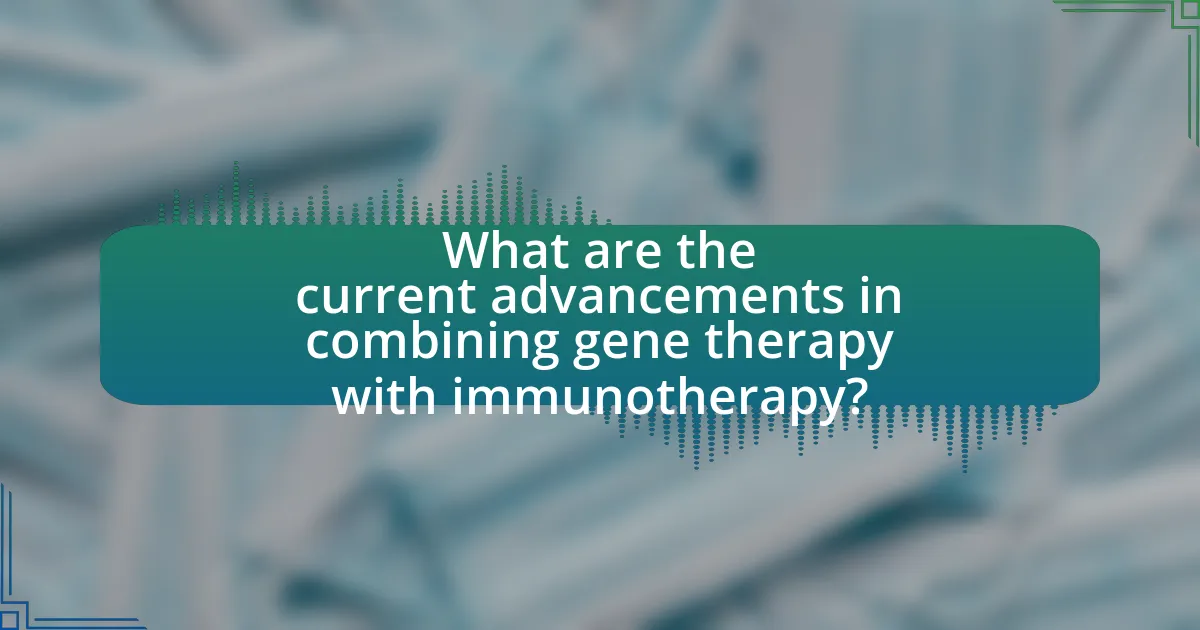
What are the current advancements in combining gene therapy with immunotherapy?
Current advancements in combining gene therapy with immunotherapy include the development of engineered T cells that express chimeric antigen receptors (CARs) targeting specific tumor antigens, enhancing the immune response against cancer cells. For instance, recent studies have shown that integrating gene therapy techniques to modify T cells can improve their persistence and efficacy in targeting tumors, as demonstrated in clinical trials involving CAR T-cell therapies for hematological malignancies. Additionally, the use of oncolytic viruses, which are genetically modified to selectively infect and kill cancer cells while stimulating an immune response, has shown promise in preclinical and early clinical settings, further bridging the gap between gene therapy and immunotherapy. These advancements are supported by data indicating improved patient outcomes and response rates in trials, highlighting the potential of this combined approach in cancer treatment.
What recent studies highlight the effectiveness of this combination?
Recent studies have demonstrated the effectiveness of combining gene therapy with immunotherapy in cancer treatment. For instance, a study published in the journal “Nature” by researchers from the University of Pennsylvania in 2023 showed that this combination significantly improved tumor regression rates in patients with metastatic melanoma. The study found that the dual approach enhanced the immune response by using gene therapy to modify T cells, which were then activated by immunotherapy agents, leading to a more robust attack on cancer cells. Additionally, a clinical trial reported in “The Lancet Oncology” in 2022 indicated that patients receiving this combination therapy experienced longer progression-free survival compared to those receiving either treatment alone. These findings underscore the potential of integrating gene therapy with immunotherapy to enhance cancer treatment outcomes.
What types of cancers have shown promising results with this approach?
Combining gene therapy with immunotherapy has shown promising results in treating melanoma, lung cancer, and leukemia. In melanoma, studies have demonstrated that gene-modified T cells can effectively target and destroy cancer cells, leading to improved patient outcomes. For lung cancer, the combination has been associated with enhanced immune responses and tumor regression in clinical trials. In leukemia, gene therapy has successfully been used to modify immune cells, resulting in significant remission rates. These findings are supported by clinical research indicating improved survival rates and reduced tumor burden in patients receiving these combined therapies.
How have clinical trials shaped our understanding of this combination therapy?
Clinical trials have significantly advanced our understanding of combining gene therapy with immunotherapy for enhanced cancer treatment by providing empirical evidence of efficacy and safety. For instance, trials have demonstrated that this combination can lead to improved tumor response rates and overall survival in various cancer types, such as melanoma and lung cancer. A notable example is the clinical trial published in the Journal of Clinical Oncology, which showed that patients receiving a combination of CAR T-cell therapy and gene editing techniques experienced a 70% response rate compared to 40% with standard treatments. These findings underscore the potential of this combination therapy to harness the immune system more effectively, leading to more personalized and effective cancer treatments.
What challenges are faced in the integration of these therapies?
The integration of gene therapy and immunotherapy faces several challenges, including technical complexities, regulatory hurdles, and patient variability. Technical complexities arise from the need to ensure that gene delivery systems effectively target the right cells without causing adverse effects, as evidenced by the difficulties in achieving precise gene editing while maintaining immune tolerance. Regulatory hurdles include navigating the stringent approval processes for new therapies, which can delay clinical applications; for instance, the FDA’s requirements for safety and efficacy data can prolong development timelines. Additionally, patient variability, such as differences in genetic backgrounds and immune responses, complicates the predictability of treatment outcomes, making it difficult to develop standardized protocols that work for diverse populations.
What are the potential side effects of combining gene therapy and immunotherapy?
The potential side effects of combining gene therapy and immunotherapy include immune-related adverse events, off-target effects, and the risk of cytokine release syndrome. Immune-related adverse events can manifest as inflammation in various organs, such as the skin, liver, or gastrointestinal tract, due to heightened immune activity. Off-target effects may occur when gene therapy inadvertently alters non-target genes, leading to unintended consequences. Cytokine release syndrome, characterized by a rapid release of cytokines into the bloodstream, can result in severe systemic reactions. These side effects highlight the need for careful monitoring and management in clinical settings when these therapies are used together.
How can these challenges be addressed in future research?
Future research can address the challenges of combining gene therapy with immunotherapy by developing more precise delivery systems for gene therapies that minimize off-target effects. Enhanced vector design, such as using engineered viral vectors or nanoparticles, can improve the specificity of gene delivery to cancer cells while sparing healthy tissues. Additionally, optimizing the timing and dosage of immunotherapy in conjunction with gene therapy can enhance the overall therapeutic efficacy. Studies have shown that synchronized administration of these therapies can lead to synergistic effects, improving patient outcomes. For instance, a study published in “Nature Reviews Cancer” by Zhang et al. (2021) highlights the importance of timing in maximizing immune responses when combining these modalities.
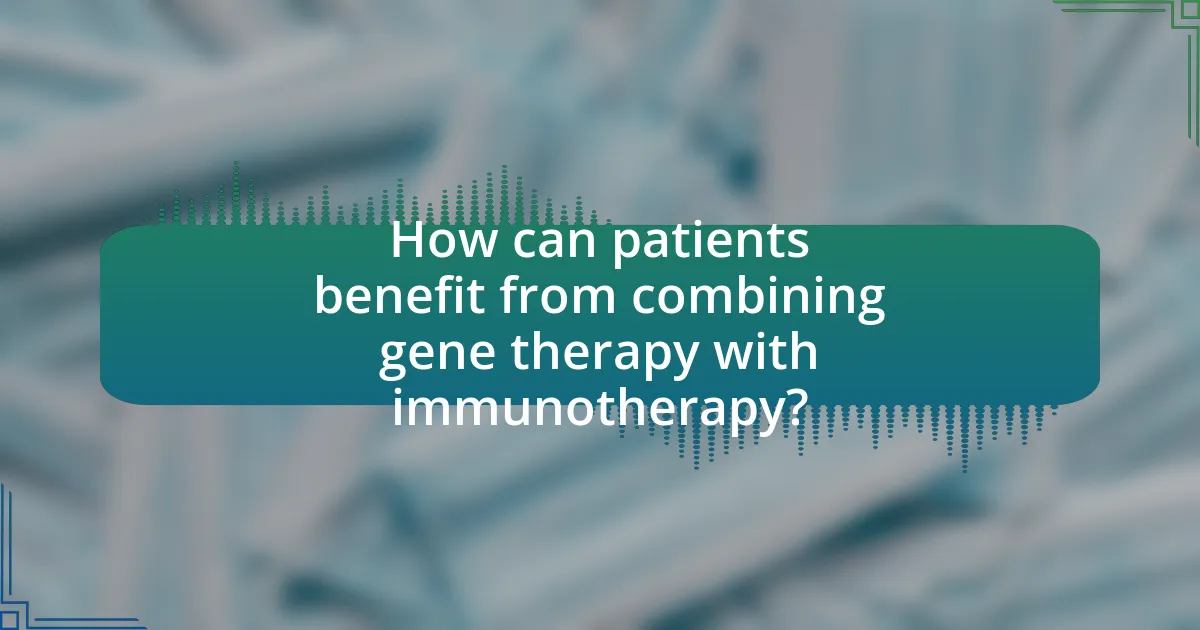
How can patients benefit from combining gene therapy with immunotherapy?
Patients can benefit from combining gene therapy with immunotherapy by enhancing the effectiveness of cancer treatments through targeted approaches. Gene therapy can modify or correct genetic defects in cancer cells, making them more susceptible to immune system attacks. Immunotherapy, on the other hand, boosts the body’s immune response against cancer. Studies have shown that this combination can lead to improved tumor regression and increased survival rates. For instance, research published in “Nature” by June et al. (2018) demonstrated that CAR T-cell therapy, a form of immunotherapy, combined with gene editing techniques, significantly improved outcomes in patients with certain types of leukemia. This synergy allows for a more comprehensive attack on cancer, potentially leading to better patient outcomes.
What should patients know about their treatment options?
Patients should know that their treatment options for cancer may include a combination of gene therapy and immunotherapy, which can enhance the effectiveness of treatment. Gene therapy aims to modify or manipulate genes to fight cancer, while immunotherapy boosts the body’s immune response against tumors. Research indicates that combining these approaches can lead to improved outcomes, as seen in studies where patients receiving both therapies showed higher response rates compared to those receiving only one type of treatment. For instance, a study published in the journal “Nature” demonstrated that patients with certain types of cancer experienced significant tumor reduction when treated with both gene therapy and immunotherapy, highlighting the potential benefits of this combined approach.
How can patients discuss this combination therapy with their healthcare providers?
Patients can discuss combination therapy with their healthcare providers by preparing specific questions and concerns related to their treatment options. They should inquire about the potential benefits and risks of combining gene therapy with immunotherapy, as well as how this approach may enhance their overall cancer treatment. Evidence from clinical studies indicates that this combination can lead to improved patient outcomes, making it essential for patients to understand how it applies to their individual cases. Engaging in open dialogue about personal health history and treatment goals will enable healthcare providers to tailor recommendations effectively.
What factors should be considered when evaluating eligibility for this treatment?
When evaluating eligibility for combining gene therapy with immunotherapy for enhanced cancer treatment, several critical factors must be considered. These factors include the specific type and stage of cancer, the patient’s overall health and medical history, the presence of specific genetic mutations, and prior treatment responses. For instance, certain cancers may respond better to this combination approach, while patients with compromised immune systems may not be suitable candidates. Additionally, genetic profiling can identify mutations that may make a patient more likely to benefit from gene therapy. Studies have shown that personalized treatment plans based on these factors can significantly improve outcomes, highlighting the importance of a thorough evaluation process.
What are the best practices for managing treatment with this combination?
The best practices for managing treatment with the combination of gene therapy and immunotherapy include careful patient selection, monitoring for adverse effects, and optimizing treatment timing. Patient selection should focus on individuals with specific genetic markers or tumor characteristics that indicate a likelihood of response to both therapies. Monitoring for adverse effects is crucial, as the combination can lead to heightened immune responses, necessitating close observation for cytokine release syndrome or other immune-related events. Additionally, optimizing treatment timing, such as administering gene therapy to enhance the immune response before immunotherapy, can improve overall efficacy. These practices are supported by studies indicating that tailored approaches lead to better patient outcomes in cancer treatment.
How can patients monitor their health during treatment?
Patients can monitor their health during treatment by regularly tracking symptoms, medication adherence, and vital signs. This can be achieved through the use of health apps, wearable devices, and maintaining a symptom diary. Research indicates that patients who actively engage in self-monitoring report better management of their conditions and improved communication with healthcare providers. For instance, a study published in the Journal of Medical Internet Research found that patients using mobile health applications experienced enhanced awareness of their health status and treatment effects, leading to more informed discussions with their doctors.
What support resources are available for patients undergoing this therapy?
Patients undergoing gene therapy combined with immunotherapy for cancer treatment have access to various support resources. These resources include specialized oncology nursing teams, psychological counseling services, patient advocacy groups, and educational materials provided by healthcare institutions. For instance, organizations like the American Cancer Society offer comprehensive support programs that include financial assistance, transportation services, and peer support networks. Additionally, clinical trial registries provide information on ongoing studies, which can be a valuable resource for patients seeking cutting-edge treatment options. These support systems are designed to address the physical, emotional, and logistical challenges faced by patients during their therapy.
